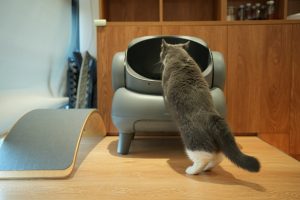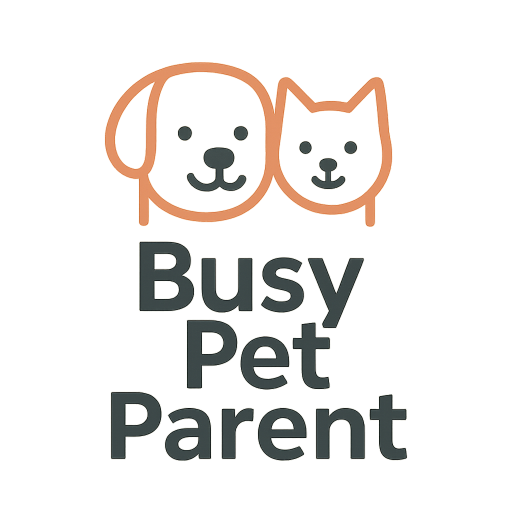
10 Genius Dog Crate Alternatives for Apartments That Actually Work
Crate training isn’t always a perfect match — especially in small apartment spaces or for dogs with crate aversion. While crates can help with routine, safety, and training, they aren’t the only option. For some pups, a traditional crate triggers anxiety, frustration, or confinement stress. And in tight apartment layouts, a bulky crate can quickly eat up valuable space.
That’s where crate-free apartment living comes in. Whether your dog hates the crate, your lifestyle demands flexibility, or you simply want a less restrictive environment, there are smart, humane, and apartment-friendly ways to give your dog structure without the bars. These dog crate alternatives for apartments focus on gentle boundaries, positive routines, and small-space creativity.
In this guide, you’ll find 10 proven alternatives that work for anxious dogs, high-energy puppies, and even seniors with mobility issues. Every solution here is designed with apartment living in mind — meaning compact layouts, multi-use furniture, renter-safe tools, and noise considerations. No yelling. No punishments. Just smart structure and calm confidence.
1. Use a Tall, Freestanding Pet Gate to Create a Calm Zone
Instead of confining your dog to a small crate, consider using a tall freestanding pet gate to block off a dog-safe space in your home. Gating off your bedroom, hallway, or laundry nook can provide all the containment benefits of a crate, minus the stress and confinement.
Choose a gate that's sturdy, chew-proof, and tall enough that your dog can’t jump over it. Add a soft bed, a bowl of water, and a few enrichment toys or chews. Bonus: many gates now fold for easy storage and installation without damaging walls — perfect for renters.
2. Set Up a Portable Indoor Playpen
Indoor dog pens are one of the most versatile dog crate alternatives for apartments. They allow your dog to stretch out, move around, and interact with toys — all while keeping them out of trouble in a defined space.
Look for soft-sided or metal-framed pens that fold flat when not in use. Many dogs who hate crates find these open-top enclosures far less intimidating. Just be sure to anchor the pen if your dog is a climber or nudger. For great options, check out the Petsense collection of carriers and enclosures.
3. Repurpose a Walk-In Closet or Under-Stair Nook
Have a spare closet or cozy under-stair corner? You can easily convert it into a “den zone” for your pup. Clear out hazardous items, add a small rug, their favorite bed, and a calm light source like a plug-in nightlight.
Make it cozy, but never close the door on your dog. The space should feel like a choice, not a punishment. This solution works especially well for dogs with crate trauma. It also complements your apartment layout beautifully — no bulky crates blocking the hall. For dogs still adjusting to new environments, see our crate training tips for apartments.
4. Use Furniture-Style Crate Alternatives for Stealth and Comfort
If you love the idea of a contained space but hate the bulky look of a wire crate, furniture-style alternatives are a brilliant middle ground. These multi-use pieces double as end tables, benches, or consoles while giving your dog a cozy nook to rest in.
They're stylish, often wooden or rattan-framed, and blend into your living space without screaming "kennel." Just ensure any model you choose is properly ventilated, chew-safe, and large enough for your pup to stand and turn around.
5. Turn a Large Exercise Pen into a Living Room Retreat
Instead of hiding your dog’s space away, you can incorporate a spacious exercise pen right into your living area. Choose a tall pen with ample space and place it near a window or soft-lit corner.
Add blankets, a cooling mat, puzzle toys, and even a white noise machine. This setup provides visual stimulation while still offering boundaries. If your dog deals with separation anxiety or excessive barking, our barking when alone post has additional tips to pair with this method.
6. Build a Routine-Based Chill Corner with Positive Reinforcement
Instead of physical barriers, use behavioral routines to create structure. Choose a specific corner of the room (near your desk, couch, or bedroom) and teach your dog that it's their "relax zone." Use a consistent bed, scent, and verbal cue.
Reinforce it daily with treats, calm praise, and a consistent routine — such as post-walk rest time or quiet evening wind-down. Dogs who dislike crates often respond better to free-choice spaces they associate with safety and routine.
7. Design a Gated Hallway Retreat for Daily Downtime
If you live in an apartment with a hallway that leads to bedrooms or the bathroom, try gating off that hallway and turning it into a decompression zone for your dog. This low-traffic area gives your pup a long, narrow, den-like space that’s out of the way but still connected to the rest of your home.
Lay down rugs or yoga mats for traction, add a bed near a wall, and place a food puzzle to keep your dog engaged. This is a great method for busy apartment dwellers who want to create structure without visual clutter.
8. Convert a Low Bookshelf or Sideboard into a Covered Den
Have a bottom shelf that’s empty or unused? Drape a curtain or soft fabric over the open edge and slide in a small bed. Many dogs love having an enclosed area that mimics the feeling of a den, especially in urban spaces with lots of noise.
This trick works well in studio apartments where furniture has to serve dual purposes. Just make sure there are no sharp corners or breakables within reach. For more apartment hacks, visit our guide on pet-proofing small living areas.
9. Use a Travel Carrier or Soft Kennel for Short-Term Confinement
For short trips, vet visits, or quick breaks, a soft-sided travel carrier can serve as a great short-term solution. These are lighter, more portable, and often feel less restrictive than rigid crates. Plus, they pack away easily — a major bonus in small apartments.
Always acclimate your dog to the carrier first. Leave it open, toss treats inside, and let them explore on their own terms. For more guidance, see the Anti-Cruelty Society’s crate training breakdown.
10. Let Calm Music and White Noise Set the Environment
For some dogs, crate resistance is rooted in noise sensitivity and over-arousal. Try using calm music, white noise, or a sound machine in the area you designate as their chill zone. Over time, the audio cue alone can signal to your dog that it’s time to rest — even without a crate.
This works beautifully in shared apartment spaces where outside noise (neighbors, elevators, city traffic) can disrupt rest. Pair this with any of the alternatives above to build a reliable routine.
Final Thoughts
You don’t need a crate to raise a well-behaved, happy dog in an apartment. Whether your pup struggles with anxiety, or you simply need a more flexible layout, these dog crate alternatives for apartments give you the structure and peace of mind — without the stress of confinement. Just remember: successful crate-free living comes from consistency, safety, and understanding your dog’s individual needs.
Frequently Asked Questions
Can I raise a puppy without ever using a crate?
Yes — but it takes planning. Crate-free puppy raising requires careful supervision, safe zones, and positive training to prevent accidents and destructive behaviors.
Are any dog crate alternatives for apartments renter-friendly?
Absolutely. Soft gates, playpens, and portable carriers don’t damage walls and fold away easily. Furniture-style kennels are also great multi-purpose options for small spaces.
How do I know which alternative is best for my dog?
Start with your dog’s needs. Are they anxious? Energetic? A chewer? Choose a setup that matches their behavior and gives them enough space, stimulation, and routine.
What if my dog destroys everything when left loose?
Try a tall, secure playpen first — and increase freedom gradually. Use chew-safe enrichment toys and reward calm behavior. Destruction often improves with structure and exercise.
Where can I learn more about building calm routines for my dog?
Check out our post on daily pet routines for busy mornings. It includes a downloadable checklist and crate-free tips that work great in apartments.

Join the Busy Pet Parent Newsletter!
Get easy routines, time-saving tips, and the latest gear reviews—delivered straight to your inbox.
Perfect for busy pet owners, apartment dwellers, and anyone who wants a happy, healthy companion (without the stress).
Exclusive guides & checklists
Product recommendations & deals
No spam—unsubscribe anytime!




